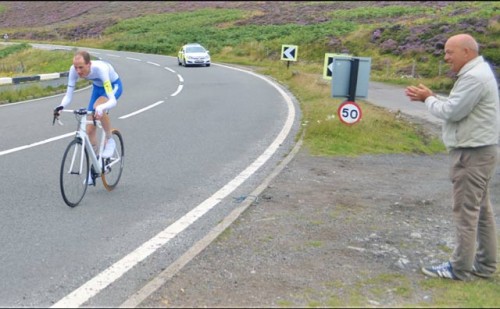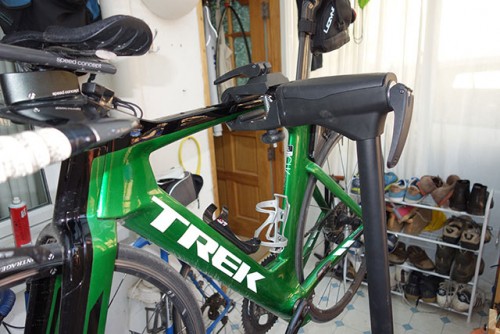For those just starting to get into road cycling, these are a few tips from my own experience of riding a bike for past 20 years.
Buying a bike
The first place to start is with buying a road bike. You don’t have to spend a fortune. For an entry level road bike, I would advise selecting a budget and sticking to that. Anything in the range of £500 to £1,200 is a very good starting point for an entry level road bike.
- I have tested a few sub £500 bikes, and they are fairly decent. If you want to get started in road cycling, don’t worry if your budget is only £500. I have bought a Specialized Allez road bike (£600) to use when in New York, and it gives a good enough riding experience for my training over in the US.
- If you can increase your budget to £1,000 you will get a significant improvement in the quality of the bike – lighter, stronger, better components and you can start to get carbon fibre frames.
- Carbon fibre gives a nice riding experience. But remember, carbon fibre isn’t everything.
- Over £1,200 you can pay as much as you want to – up to £10,000. But, you will get diminishing marginal returns for your extra money. Many riders wouldn’t really notice a big difference between a £1,500 bike and a £3,000 bike.
- In terms of bike models, there are many good options. I couldn’t recommend one brand being significantly ‘better’ than another. In reality, there are considerable similarities (and they use similar components like Shimano gears). For some brands like Bianchi, you might pay a little more. For lesser known brands, like this KTM Strada, it is often relatively cheaper for the components you get.
Where to buy a bike?
For a beginner, there is a lot to be said for buying from a good local bike shop. They will be able to advise, and help with set up. You can save a little buying online, but some brands like Trek are kept at the same price. Bear in mind, if you have any problems, it is much easier to take back to a local bike shop.
- If your budget is low, second hand is an option, but I have never wanted to go down this route.
- Bear in mind the best time to buy a bike is early autumn when new models are coming out and there are potential discounts on last years models.
Basics of riding
- Saddle height is very important. A good starting point is this guide to correct saddle height. Learn your saddle height and keep it constant across different bikes. If you get more into cycling, you might like to do a full bike fit. But, for beginners, the correct saddle height is the most important starting point.
- Cadence. Many beginners like to churn a big gear (low cadence). Generally, it is good to practise pedalling at a little higher cadence. This helps to prevent muscle fatigue too early. Pedalling a higher cadence can also help to improve your cycling style.
- Good position. Sometimes you might hear a remark ‘that cyclist has a nice style’ Where possible, we want to keep the upper body still, also look at your legs, they should move in straight lines like pistons. If your legs are moving outwards or inwards at funny angles, it can cause knee problems and is inefficient.
Things to carry when riding
For any ride where you’re a good distance from home, it is good to be self-sufficient if you get a puncture. Get a decent saddle bag, and carry
- Two inner tubes (punctures can be like buses, they have a habit of coming along in twos)
- Mini pump
- Tyre levers
- Multi-tool. (ideally it should have a chain tool). Breaking your chain is very rare, but when it does you’re stuck without a chain tool.
- Waterproof jacket.
Pacing
Whatever the event – a 10 mile time trial or a 100 mile sportive. Most riders, at some stage, will set off too fast! and pay for it later. If a distance is completely new, hold back a little at the start, you can always pick up the pace later.
Other riding tips
- Tips for cycling up hills – techniques for dealing with hills from 20km to 25%
- Tips for avoiding saddle sores – they can be a pain in the butt, but they can be minimised.
Training
The good thing about being a beginner is that as long as you ride the bike, you will see improvements in fitness. It’s only when you are already fit, that it gets progressively harder to keep improving. The best principle is to start off with some basic endurance training – get used to riding the bike at a steady pace. When you have this base aerobic endurance, you can start doing some speed work, hill climb intervals and improving your top end.
Bike Maintenance
Bike maintenance can put quite a few people off. (I was always pretty useless for many years) The only really important skills are:
- Learn is how to replace an inner tube. In particular make sure you don’t cause a ‘pinch flat’ – getting the inner tube stuck between tyre and rim. Alternatively, going tubeless is definitely considering. If you use self-inflating gel, it really reduces punctures to a very rare occasion.
- Check your brakes are working and use an allen key to adjust if necessary. Replace brake blocks
- Keep chain clean and oiled. At least spray with GT-85 after wet ride, to drive away moisture.
‘Advanced’ jobs
- Adjust gears. (a bike stand becomes pretty useful for doing this.
- Replacing cassette and chain ring
These tasks are less important because you won’t do them so often.
Best equipment to buy
A newcomer can be overwhelmed by the amount of equipment you can spend your money on. There is a temptation to think spending money will make you a better cyclist – it won’t. These items are definitely worth buying:
- Set of lights for winter.
- Cycle helmet
- A good pair of road tyres. Even if your bike costs only £500, I’d still recommend spending £60 – 80 on the top of range pair of tyres. They will last longer and be less prone to punctures.
- A good pair of padded shorts. Many people find sitting on a saddle uncomfortable. A good pair of shorts makes a huge difference. If you are going to be doing 6 hour rides, I really recommend spending £100 on a pair of shorts. If you are doing just 2 hour rides, you don’t have to spend that much, but it is still a good investment.
- Saddle bag, mini pump and spare inner tubes.
- Clip on mudguards – easy to fit
- A good wicking inner base layer
- Cycle jersey with back pockets for food.
- Clipless pedals – make it difficult to walk, but improve the cycling experience
- A lightweight waterproof jacket that can easily fit into the back pocket. I recommend the Altura Night Vision Flite
- Good lubrication. It is worth buying wet weather lube for winter and a good dry lube for summer. See: Chain lubrication
Remember cycling doesn’t have to be expensive – Tips for saving money when buying equipment
Road Etiquette
It’s good to get practise riding in a group. Riding with people of similar abilities. If you go out with a local chain gain when you’re not used to riding at those speeds, could end in disaster. Some simple element of road etiquette
- Don’t use tribars when in a group.
- Use mudguards during winter.
- Be careful, point out upcoming obstacles to riders behind.
- Be careful riding in a group. It is a good way to get into cycle, but do pay some attention to group etiquette. It becomes more important to keep a close eye on what is happening around you.
- Do observe the Highway code. You will get into less difficulties and dangerous situations.
- If you want to take road cycling really seriously, you could check out these 101 rules (though I’m not very good at following them)
- Don’t feel you have to ride in the gutter. It is advised to cycle a good distance from curb for better visibility and safety. Also, give room to avoid potholes and opening car doors. See: Why cycle in the middle of the road
Nutrition and hydration
The good news is that cycling can burn a lot of calories. Although eating and drinking is common sense, you might be surprised at how much extra calories you need on long rides. You definitely want to avoid the dreaded ‘bonk’ – where you completely run out of energy.
If you ride all day, forget about the 3 meals a day – you need to be taking in energy as you go. At the same there is a maximum limit of roughly 60-80grams of carb that the body can absorb per hour – so there is no point in overdoing it.
Things to avoid
- Don’t feel the necessity of spending a lot of money on ‘lightweight’ expensive components. You can if you want to, but it won’t really make too much difference. (Before spending £1000’s See: time saved from weight loss on bike)
- Avoid being unrealistic in your aims. If you jump into a six hour ride, unprepared, you might be put off for life!
Things to do
- Just start cycling. A lot of it is common sense you can pick up things along the way. Once you get the cycling bug, you will always find a solution to any problem.
- Join a cycling club group with similar aims. You will pick a lot of tips from riding with old timers.
- A bit of core strength exercises are worth doing
- Enjoy it. You will meet inconsiderate drivers. But, be prepared for worse, and let go of unfortunate incidents (cycling and how to enjoy bike)
- Do enter a hill climb. No, this really is the best advice I can give to any beginner cyclist. The sooner you learn all about excruciating pain, the better. It made me the cyclist I am today.
- Do try to make your position on the bike relatively comfortable. If you are uncomfortable, you won’t want to cycle.
Other useful articles
- Overtaking other cyclists – how to do it with style.
- 10 mile time trials – a good introduction to racing time trials






I’ve got some friends who are just starting to ride this year, and they’ve been asking a lot of questions about stuff like this, in particular, equipment for newbies. This article explains it all very simply and is a good catalyst for more detailed conversations. I’ll be sending them this article!
I’ve just started myself as ive signed up for a charity race in September the challenge cancer Cycle and I’ll be saving this article for future references it is so helpful and easy to understand it will definitely keep me on track, ive recently (yesterday) had a couple of falls on my bike whilst using cleats do you have any tips on learning to use them without breaking your kneecaps and elbows?
Thanks for the wisdom 🙂
I’m starting to become a cyclist 😀 Thanks for great post!